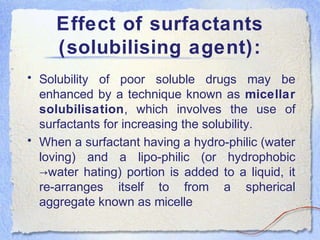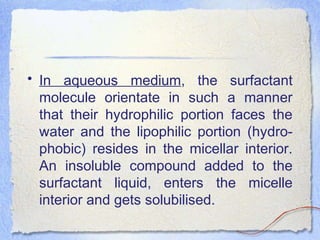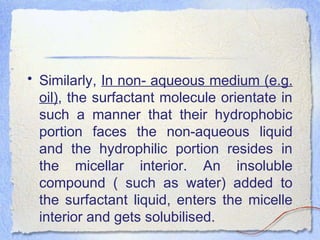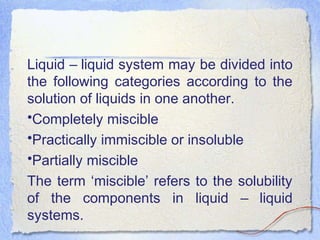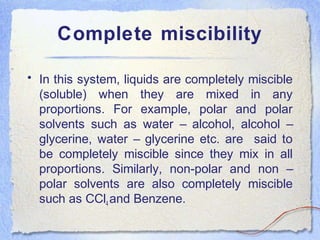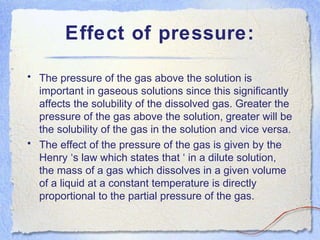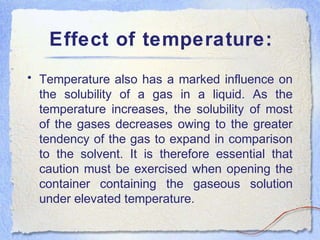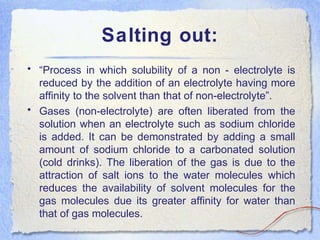The document discusses various factors that affect solubility. It defines solubility and explains how the solubility of a substance depends on the solvent, temperature, and pressure. Temperature generally increases the solubility of salts but can decrease it for substances like calcium hydroxide. Particle size and molecular structure modifications can also impact solubility. Common ion, complex formation, surfactants, pH, and non-electrolyte addition are additional factors covered. Solubility of gases depends on pressure and temperature based on Henry's law.

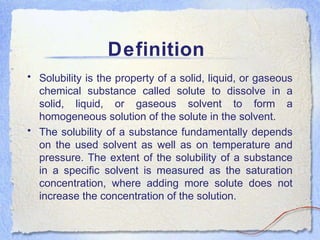
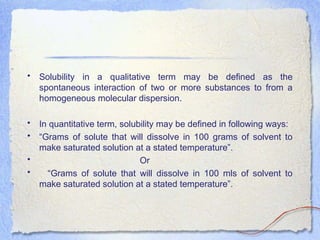

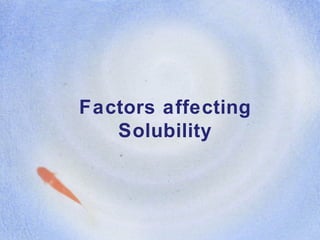






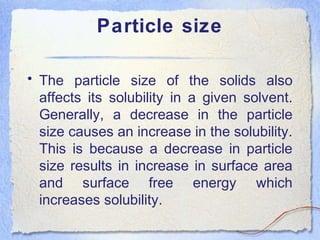



![NaCl (SOLID) Na+↔ (aq ) + Cl -
(aq)
Kc = [Na+] [Cl-
] / [NaCl]
HCl ionizes in water as:
HCl H+↔ (aq) + Cl-
(aq)
•On passing HCl gas through aqueous solution of
NaCl , concentration of Cl-
ions is increased,
therefore some of the NaCl is precipitated out to
maintain the constant value of the equilibrium
constant. This is called as common ion effect
which reduces solubility.](https://image.slidesharecdn.com/solubility-180105150241/85/Solubility-Pharmaceutics-16-320.jpg)


